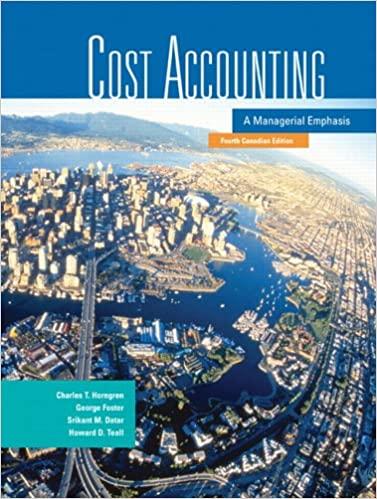Introduction of new product, income taxes. (W. Bruns) In December 2007, R.E. Torgler was trying to decide
Question:
Introduction of new product, income taxes. (W. Bruns) In December 2007, R.E. Torgler was trying to decide whether to add a new line of injection moulded plastic products to those already manufactured and distributed by Reto $.A. To do so, the company would have to buy new injection moulding equipment; none ofthe existing equipment could be adapted to perform the necessary operation, and Torgler was anxious to retain control of manufacturing. Actually, new injection moulding equipment had been postponed because the product concept was judged to need additional development. But now the product seemed ready.
$ales of the new product were forecast at $Fr. 2,400,000 per year, from which a sales commission of 15% would be paid to Reto’s sales agents. Actual sales were made in several different currencies but, for simplicity here, all money measurements are stated in their $wiss franc equivalent.
Direct manufacturing costs were budgeted at $Fr. 720,000 for materials and $Fr. 1,080,000 for labour, leaving an annual cash flow before tax of $Fr. 240,000. The new equipment would cost
$Fr. 720,000 delivered and installed, and was expected to have a useful fife of 10 years, with a zero terminal disposal value.
Reto was able to borrow money at 8%.
Required 1. Ignoring the effect of taxes, what is the internal rate of return (IRR) on the proposed investment. Assume the new equipment would be installed by January 1, 2008, and begin producing on that date.
2. The cost ofthe equipment can be deducted from annual cash flows before they are subjected to tax. .Assuming that the equipment will last 10 years, and that an equal amount of the cost of SFr. 720,000 will be deducted each year, and that the tax rate is expected to be 45%, what is the IRR on an after-tax basis?
3. lorgler has stated that Reto should be willing to purchase this machine as long as it yielded a return of 12% after taxation. Should he make the investment? Show your calculations.
4. Actually, to stimulate industrial development, the tax rules allow for depreciation deductions up to one-third ofthe cost of any such investment to be deducted from reported earnings in the first year after the investment, and up to one-fifth ofthe remainder ofthe undepreciated investment amount can be deduced in the second year. Thereafter, annual deductions are computed on a straight-line basis such that no more than the original cost ofthe equipment is depreciated over its useful life. How, if at all, does this affect the attractiveness of the investment?
5. Reto has learned that investment in working capital (receivables and inventories, less payables) amounts to approximately 15% of revenues. Will the additional SFr. 360,000 investment for the new line decrease the rate ofreturn on investment to less than the 12%
criterion Torgler has been using?
6. In late December 2007, Reto purchased the equipment, and the operating results turned out as forecast. A year later, Torgler learned that the manufacturer of the new equip¬
ment had introduced new models that were more automated. The new equipment cost SFr. 1,200,000 and would permit labour savings of SFr. 240,000 per year, thus doubling the net operating cash flow on the product. As a result of the technological advance, Torgler expected the one-year-old machine could be sold for only SFr. 240,000 despite the fact that its book value was SFr. 480,000. If Reto buys the new machine and depreci¬
ates it using allowed tax depreciation over 10 years, would the investment meet the 12%
after-tax criterion? Show your calculations.
7. If the one-year-old machine has a zero disposal price, would replacing it with the new machine still be desirable? Show your calculations.
8. Torgler was loath to throw away a nearly new machine and thought he might be better off to keep it one more year and then replace it. Would he be better off? How would you go about addressing this issue? Explain.
9. During 2008, the rate of inflation remained low, and it was expected that it would average about 4% for the year. Torgler wondered how Reto’s analysis should reflect this rate of inflation, which he expected might continue for several years. Should an assumed inflation rate change his decision? Explain.
880 CHAPTER 22 COLLABORATIVE LEARNING PROBLEM
Step by Step Answer:

Cost Accounting A Managerial Emphasis
ISBN: 9780131971905
4th Canadian Edition
Authors: Charles T. Horngren, George Foster, Srikant M. Datar, Howard D. Teall





